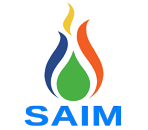In an era of unprecedented volatility, uncertainty, and disruption, the ability to cultivate organizational resilience has become an essential competitive advantage. Gone are the days when “bouncing back” from adversity was enough – today’s business landscape demands a new, more proactive and transformative approach to resilience.
Reinventing Resilience:
How Organizations Move Beyond Setbacks to Grow Through Challenges, by renowned management expert Emily Simmons, provides a groundbreaking framework for rethinking resilience and unlocking the transformative potential of challenges and crises. Through impactful case studies and practical strategies, Simmons empowers leaders to not just withstand disruption, but to leverage it as a catalyst for growth, innovation, and long-term competitive edge.
Redefining Resilience for the 21st Century:
At the heart of Simmons’ work is a redefinition of organizational resilience, one that moves beyond the traditional, reactive notion of “bouncing back” to a more proactive, adaptive, and even “antifragile” approach. Rather than simply weathering the storms of disruption, resilient organizations in the 21st century must learn to anticipate, adapt, and even thrive amidst uncertainty.
Simmons introduces the concept of “antifragile” resilience, drawing inspiration from Nassim Taleb’s groundbreaking work. Antifragile organizations, she argues, do not merely resist or recover from shocks and challenges – they actually grow stronger, more innovative, and better equipped to navigate future disruptions as a result.
This transformative perspective on resilience is underpinned by several key principles:
- Embracing Uncertainty:
Resilient organizations understand that uncertainty is an inherent and unavoidable part of the modern business landscape. Rather than trying to eliminate or control uncertainty, they learn to view it as a source of opportunity and growth.
- Cultivating Adaptive Capacity:
Antifragile organizations develop the agility, flexibility, and dynamic capabilities needed to pivot quickly in response to changing market conditions and emerging challenges. They prioritize continuous learning, experimentation, and the rapid integration of new knowledge and skills.
- Nurturing a Resilience Mindset:
At the individual and organizational level, resilient companies foster a growth mindset, an entrepreneurial spirit, and a willingness to take calculated risks. They empower their people to embrace setbacks as chances to learn, innovate, and expand their capabilities.
- Leveraging Diversity and Collaboration:
Resilient organizations actively seek out diverse perspectives, backgrounds, and areas of expertise. By fostering cross-functional collaboration and the exchange of ideas, they are better equipped to anticipate emerging trends, identify novel solutions, and adapt to shifting market demands.
- Aligning Purpose, People, and Processes:
Simmons emphasizes the critical importance of aligning an organization’s purpose, people, and processes in the pursuit of antifragile resilience. When these elements are synchronized, companies can unlock new levels of agility, innovation, and long-term viability.
- Putting Theory into Practice:
Throughout the book, Simmons provides a wealth of real-world case studies and practical strategies to help leaders implement the principles of antifragile resilience within their own organizations. From agile decision-making frameworks to dynamic talent management practices, the book offers a comprehensive playbook for navigating uncertainty and disruption.
One particularly compelling case study explores the transformation of a traditional manufacturing company that, faced with the rise of automation and digital disruption, pivoted to become a nimble, technology-driven innovator. By embracing uncertainty, fostering a culture of experimentation, and investing in the continuous upskilling of its workforce, the company not only survived but thrived in the new economic landscape.
Another insightful example delves into the resilience journey of a global logistics firm that weathered the devastating impact of the COVID-19 pandemic. Rather than simply reacting to the crisis, the organization proactively leveraged its diverse talent pool, collaborative mindset, and agile processes to rapidly develop and deploy innovative solutions, ultimately emerging from the pandemic stronger, more efficient, and better positioned for future growth.
The Power of Antifragile Resilience:
In a world that is increasingly volatile, uncertain, complex, and ambiguous, the capacity to cultivate antifragile resilience is no longer a nice-to-have, but a strategic imperative. Simmons’ Reinventing Resilience provides a timely and invaluable roadmap for leaders and organizations seeking to not only withstand the challenges of the 21st century but to leverage them as catalysts for growth, innovation, and enduring success.
By embracing uncertainty, fostering adaptive capacity, and aligning their purpose, people, and processes, businesses can unlock new avenues for value creation, competitive differentiation, and long-term sustainability. Ultimately, Reinventing Resilience makes a compelling case that the organizations that thrive in the years ahead will be those that have the courage and vision to redefine resilience, and to turn disruption into their greatest strategic advantage.
In a rapidly evolving business landscape defined by constant change and uncertainty, the ability to cultivate organizational resilience has emerged as a critical differentiator. Reinventing Resilience: How Organizations Move Beyond Setbacks to Grow Through Challenges offers a transformative framework for rethinking resilience, empowering leaders to not just weather the storms of disruption, but to leverage them as catalysts for growth, innovation, and enduring competitive advantage.
Through impactful case studies, practical strategies, and a redefinition of resilience for the 21st century, Simmons’ work equips organizations with the mindset, capabilities, and tools needed to embrace uncertainty, foster adaptive capacity, and align their purpose, people, and processes in the pursuit of antifragile resilience. In doing so, it provides a vital roadmap for navigating the challenges of today and positioning companies for long-term success in an increasingly volatile, complex, and disruptive business environment.


















